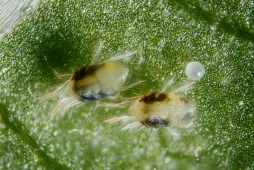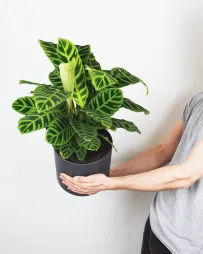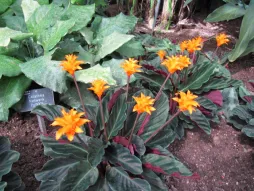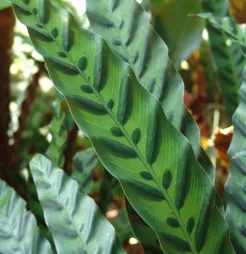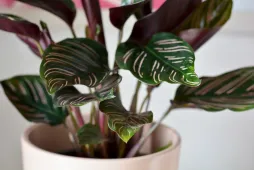Goeppertia rufibarba, the velvet-leaved houseplant
Like many specimens of the Marantaceae family, Goeppertia rufibarba comes to us from the tropical forests of Brazil. While goeppertia crocata is distinguished by the color of its flowers and goeppertia lancifolia by the pattern of its evergreen foliage, Goeppertia rufibarba has plain, velvety-textured leaves.
How to recognize the Goeppertia rufibarba?
Goeppertia rufibarba grows to a maximum height of one metre. This rhizomatous plant grows broadly, creating new branches from its base. Leaves grow in rosettes on long, slender stems. They give the plant an upright, compact habit.
Blades can measure up to 25 centimetres. They are lanceolate with wavy margins. The upper surface of the leaf is dark green or bright green. The underside is blue-green with violet highlights. On this side and on the purple stem are tiny, silky hairs. These are what give Goeppertia rufibarba its fluffy feel and its nickname of velvet plant.
In theory, Goeppertia rufibarba flowers every year in summer. The short flowering stem supports the pale yellow flowers and their bracts. But since they hatch beneath the leaves, at the base of the plant, they're hardly noticeable.
If we all know that green plants are living organisms, the Goeppertia rufibarba will remind you of this every day. When night falls, it folds its leaves in pairs, as if joining hands to pray. This peculiarity, which it shares with other Goeppertia plants, has earned it the nickname of praying plant.
Our maintenance tips
Not very demanding, your Goeppertia rufibarba is content with a location without direct sunlight and plenty of humidity.
Watering
The plant should be watered when the surface of the root ball is dry (about one centimeter deep). Water with non-calcareous room-temperature water, such as rainwater or demineralized water.
To prevent root rot, never leave standing water in the saucer or at the bottom of the planter.
To prevent root rot, never leave standing water in the saucer or at the bottom of the planter.
Spray
Fogging helps to increase humidity and prevent pest invasion. Spray the foliage with fresh water, such as rainwater. Avoid tap water. Too hard, it leaves white marks on the leaves.
Repotting
Every spring, repot your Goeppertia rufibarba to give it more space.
Obtain a pierced pot of a larger size than the previous one. Don't hesitate to choose a ceramic or plastic model. These materials retain moisture and allow you to space out watering. Your Calathea rufibarba also prefers a wide pot to a deep container to give it room to grow.
Line the bottom with gravel or clay balls for drainage. Then pour in potting soil for green plants. You can lighten it by adding perlite.
Plant your subject in the middle and fill in with substrate. Water for the first time to eliminate air bubbles and encourage rooting.
Fertilization
To promote the growth of your Goeppertia rufibarba, apply fertilizer in spring and summer.
Add nutrients with a green plant fertilizer.
Cleaning
To improve photosynthesis, clean the foliage with a damp sponge.
Prune
To remove yellowed, damaged or wilted leaves, cut them off at the base with a sharp, clean tool.
Cutting
Cutting is carried out during the strong growth phase, generally in spring and early summer.
Carefully dig up your plant. Locate a rhizome with roots and several leaves on its periphery.
Carefully separate it from the others using your hands or a clean, sharp tool.
Place the reject in a pot with holes adapted to its size. Pour a thin layer of gravel or clay balls into the bottom. Add potting soil for seedlings and plantations. Plant your cutting and cover the roots with soil.
Water for the first time to facilitate contact between roots and substrate.
Diseases / Threats
Information
| Family | Marantaceae - Marantaceae |
| Type | Goeppertia - Goeppertia |
| Species | Goeppertia rufibarba - Goeppertia rufibarba |
| Lifecycle | Perennial |
| Foliage | Evergreen |
| Exposures | |
| Substrat | |
| Planting method |
In pots |
| Categories | |
| Tag |
Soiffarde |
| Origin |
South America |
| Hardiness (USDA) | 12a |
| Leaf color |
|
| Flower color |
|
Discover plants from the same family













